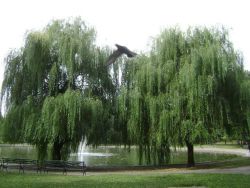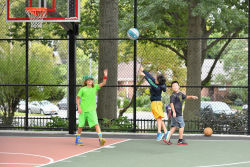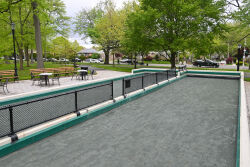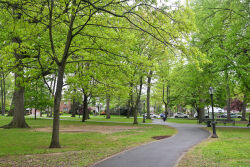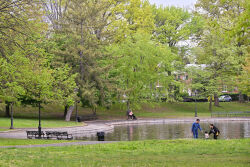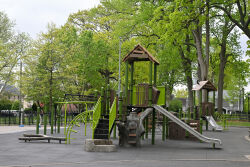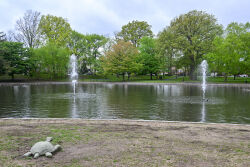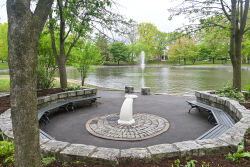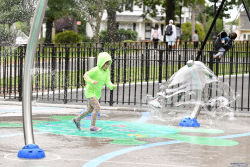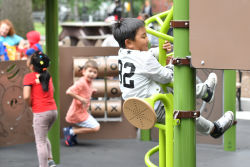Bowne Park
Bowne Park
What was here before?
This was once the site of former State Senator and New York City Mayor Walter Bowne’s summer residence, “Clifton,” which was built circa 1825. The two-story mansion was destroyed by a fire in March 1925. Mayor Bowne was a decedent of John Bowne (1627-1695), one of the earliest immigrants to Flushing and a Quaker, known for his fight for religious freedom. The Bowne family and its decedents owned large portions of land throughout this area of Queens.
How did this site become a park?
The City acquired this property in June 1925 by condemnation and it opened as a playground under the Parks Department in 1935. On June 10, 1969, Bowne Park made headlines as the first city park with an “instant playground.” This creation provided ready-made modular playground equipment which consisted of eight-sided colorful fiberglass play-cubes.
In 1994, the park was rebuilt with new playground equipment, a spray shower, and bocce and basketball courts. In 2017 the park was again reconstructed with treehouse-inspired multigenerational playground equipment and an expanded spray shower with a turtle theme to pay homage to the park’s popular native wildlife. Painted games and a full renovation of the basketball courts complete the project and offer expanded opportunities for recreation.
In 2023 accumulated sediment was removed from the park’s pond bottom to improve water quality. A new pump and aeration system were installed to improve the water quality, and two new turtle islands were added in the middle of the pond. At the same time the park’s plaza and bocce courts were renovated.
The Bowne Park Civic Association is an active group dedicated to the care of the park.
Who is this park named for?
Walter Bowne (1770-1846) was mayor from 1828-1832 and is remembered for his strict policies aimed at preventing cholera epidemics. Following reports of an outbreak in a neighboring town during the summer of 1832, Bowne established a stringent quarantine policy regulating travel in and out of the metropolitan area. Bowne, like others of his time, believed that cholera was spread through direct human contact. He required that all ships maintain a distance of at least 300 yards from municipal ports and that carriages remain at least 1.5 miles from the city limits. Bowne’s well-meaning attempts to prevent a cholera outbreak failed, and hundreds of New Yorkers died of the disease. It was not until 1883 that the German physician Robert Koch discovered that cholera spreads through contaminated water or food. By that time, cholera epidemics had been largely contained by the construction of the Croton Aqueduct and the provision of clean water for consumption and bathing.
Check out your park's Vital Signs
Clean & Safe
Green & Resilient
Empowered & Engaged Users
Share your feedback or learn more about how this park is part of a
Vital Park System

